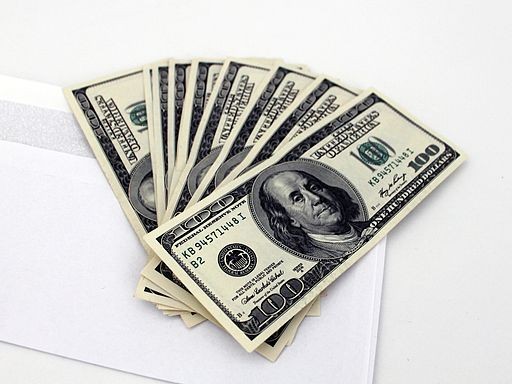Build An ETF Portfolio With $1 000
Post on: 29 Май, 2015 No Comment

NEW YORK (MainStreet ) — If you’re scared that $1,000 is too little to begin investing – let alone create a portfolio – you’d be wrong. Many of the basic principles of diversification and index investing used by investors with far deeper pockets apply to us mere human beings, too. And they can be cheaply replicated using ETFs.
The allure of Exchange Traded Funds is simple: they trade like stocks but contain a basket of assets, much like a mutual fund. This provides instant diversification, without the need to research every single stock or bond you buy. They also typically offer lower fees and expense ratios than many mutual funds, and you can often trade them for free when you buy them directly from their source (such as Fidelity or Vanguard).
Also See: Why Target Date Fund Retirement Investors Save More
The Asset Mix
The key to a diversified portfolio isn’t necessarily buying a ton of ETFs. In fact, research indicates you can achieve good diversification with just a few holdings. Instead, investors should be more concerned with asset allocation. The percentage you invest in stocks, bonds, or other asset classes likely plays a bigger role in your potential returns.
Free ETF portfolio builders, like the one at Charles Schwab. will automatically construct an asset allocation based on your needs and preferences. Just answer a few questions, such as your age, the amount you wish to invest and your risk tolerance, and the system generates a suggested ETF portfolio.
For example, an ETF allocation for a 30-year-old investor with a moderately high risk tolerance would consist of approximately 60% domestic equities, 20% fixed income/bonds and 20% international equities (15% developed markets and 5% emerging economies).
Since we’re starting with just $1,000, low fees and free trades are doubly important, so we’ll be building our sample portfolio solely from ETFs offered by Vanguard (of course, you can use any broker offering free or low-cost ETF trades).
The Portfolio
The portfolio we’ve constructed isn’t designed to chase the hottest stocks or make you a millionaire overnight. Instead, it’s a core portfolio designed to be held long-term with only minor changes as you age or your risk tolerance changes.
To stay within our $1,000 budget and construct a portfolio with an asset allocation most similar to the above 30-year-old’s, we’ve chosen the following ETFs. Note that the prices listed are recent quotes subject to daily trading price fluctuations. You may need to purchase more or fewer shares to stay within budget.
- Six shares of Vanguard U.S. Total Stock Market Index ETF (VTI ) at $97.62 each
- Two shares of Vanguard Total Bond Market ETF (BND ) at $81.34 each
- Five shares of Vanguard FTSE Developed Market ETF (VEA ) at $ 41.72 each
- One share of Vanguard FTSE Emerging Markets ETF (VWO ) at $41.15 each
- Total cost: $998.15. It’s as simple as that.
Keep in mind, however, that as asset prices fluctuate, your overall allocation may shift and no longer be aligned with your needs. Over time, you may need to re-tweak this portfolio to meet your investment goals, and the ETF portfolio builders mentioned above can help you do this for free. But this is also where things can get a little tricky, and some investors opt for the low-cost ETF portfolio management services offered by companies such as Betterment. Though this fully automates the allocation and re-balancing process, the trade-off is that your portfolio is no longer free and you relinquish some control over your investment selections.
An Even Simpler Alternative: Target-Date ETFs
If the idea of selecting and managing your own ETF portfolio or handing control over to a portfolio management service sounds unappealing, there’s an even simpler alternative: Target-Date ETFs. These aptly-named ETFs are designed as a one-stop, single investment for retirement savings. They re-calibrate their asset mix over time, investing in higher return (but riskier) assets earlier in your career and shifting toward lower-risk investments as you near retirement. You contribute your $1,000 to a fund based on your expected retirement date, and it does the rest of the work for you.
Target-Date ETFs can serve as a single holding for investors who want the simplest of portfolios, with the caveat that although they invest across a relatively broad range of asset classes, they may nonetheless offer less diversification than you’d like for your portfolio. If you don’t plan to own other investments, you need to be okay with putting all your eggs in a single ETF.
But, as your financial picture evolves, you will likely need to re-balance your portfolio, since many of us do have 401(k)s or eventually acquire other investments. Emerging market stocks might go on a tear, for example, leaving that part of your allocation heavier than you’d intended. Or, bonds may tank, leaving you with less in fixed-income than you wanted. This requires understanding what’s in your Target-Date ETF (or any of your investments, for that matter), and may mean more research or legwork than you were prepared for.
Finally, if you’re considering owning ETFs for retirement purposes, you should know that they aren’t generally tax-advantaged — unlike retirement-specific investment vehicles, such as IRAs or 401(k)s. For retirement savings, tax-advantaged accounts are often best. Some 401(k)s do offer Target-Date Mutual Funds. which function much like the similarly named ETFs. But if your 401(k) plan has no such option – or you’re ready to invest in an ETF, anyway, there is a work-around: open a self-directed IRA and invest in a Target-Date ETF of your choice. This provides you with tax-advantaged retirement account benefits for your ETF, and you can invest up to $5,500 per year in most cases.
—Written by Janet Al-Saad for MainStreet














